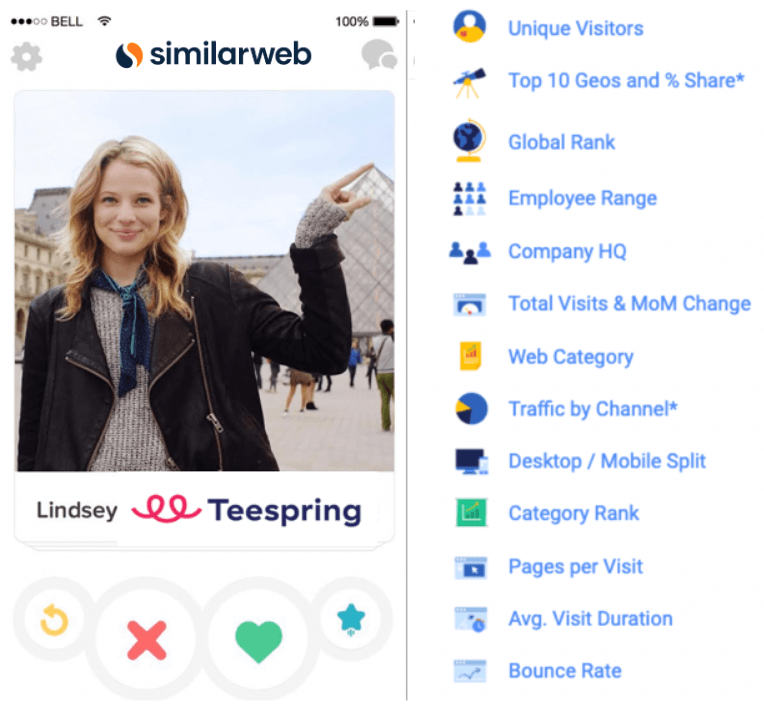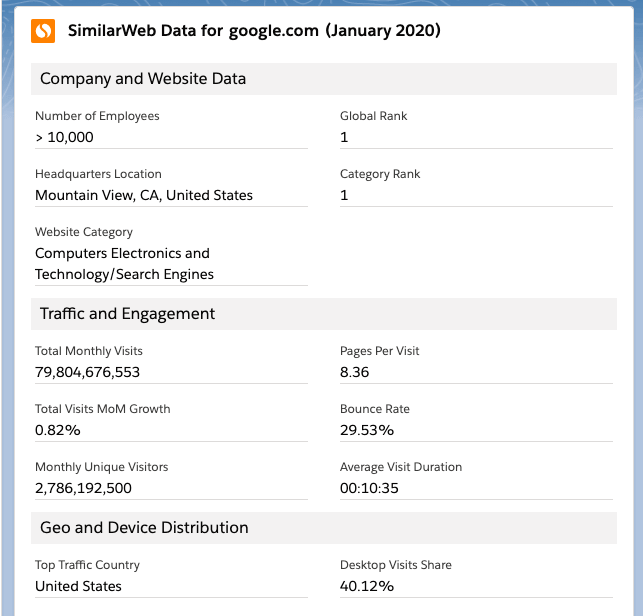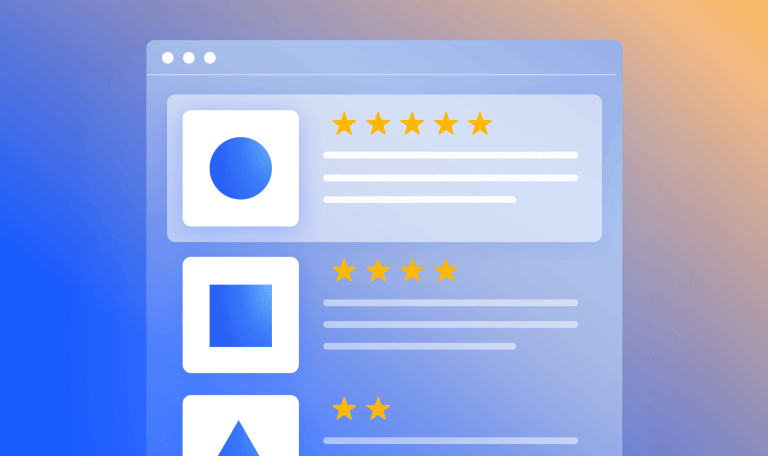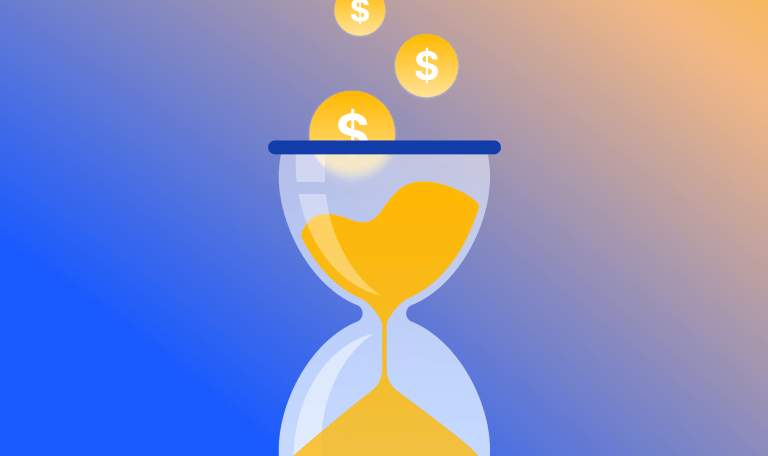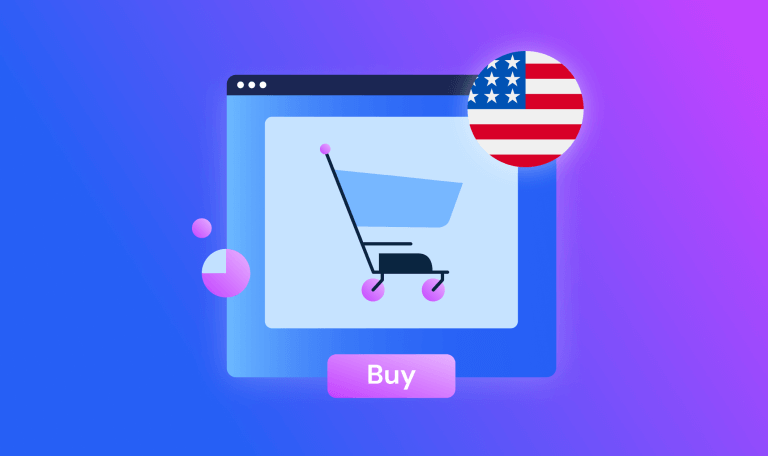When to Swipe Right: The Dater’s Guide to Sales Prospecting

If you’re in sales and you’ve ever used a popular dating app, you’ve probably noticed some similarities between sales prospecting and swiping.
First, there are the obvious ones. With each lead or profile, you come across, you want to vet them as much as possible. Will this person be a good match for you?Should you swipe right, or send them on their way?
And then there are all of the dating and communication games we all love to hate. When should you make your move? How frequently should you reach out? What should you actually say? When should you let go and move to the next one?
In sales, the hunt for new prospects is endless (monogamy is less of an expectation). The goal is to close as many deals as possible, but not with just anyone. You want each date to be perfect – or as close to your Ideal Customer Persona (ICP) as possible.
That’s where sales prospecting comes in.
Finding “the one” among inbound leads
Inbound leads are the people who “swiped right” on you. They engaged with your content or ads, filled out a lead form, and left their contact details. In dating terms, they made the first move.
Usually, the marketing team performs some kind of lead scoring and lead qualification before handing inbound leads over to your sales development reps (SDRs), so the first step of sales prospecting should be more or less covered.
If we know that a lead looks great on paper (for example, they’re the right company size, location, industry, etc.), now you have to decide: swipe left or right?
When to swipe right
SDRs and account executives (AEs) usually have long lists of leads to sort through, which means they need a system for deciding which ones to focus on.
On one hand, you don’t want to go for someone who’s completely out of your league and will have no reason to take your calls (sorry). On the other hand, there will be some leads that aren’t the right fit for you, no matter how eager they are to close a deal.
In most cases, sales teams will use sales prospecting tools such as Similarweb’s Sales Intelligence solution to qualify leads and decide who is worth pursuing.
With granular insights on the criteria that are essential to your unique ICP, you can find out who just looks great on paper, and who is the real deal.
By integrating directly into your CRM, our Sales Intelligence tool will provide you important information on your prospects in seconds, such as:
- Web traffic volumes
- Engagement metrics
- see how DHL use this capability)
- Channel (Display, Referrals, Social, Organic vs., Paid search, etc..)
With this insight, you’ll know if a prospect is worth swiping right.
Want to experience love at first sight? Get to know Similarweb’s Sales Intelligence solution.
Make your move
Now, for our favorite dating game: when to make your move.
Do you reach out to the prospect right away and risk seeming too eager, or take your time crafting the perfect pitch?
According to our research, SDRs get the highest conversion rates for inbound leads when they act quickly. SDRs who reach out to leads within one hour can achieve a 58% marketing qualified lead (MQL) to sales qualified lead (SQL) conversion rate.
Striking the balance between personalization and speed
You may assume that reaching out to each SQL in under an hour means giving up on personalization. After all, it takes time to research each lead and craft a thoughtful, compelling, and unique “pick-up line,” right?
Not if you have a great sales prospecting tool.
With the insights you’ve gained about your prospects from our Sales Intelligence tool, you’ll already have all of the information you need to write a personalized message at your fingertips.
The same goes for outbound leads. Once you’ve identified high-potential prospects, analyzed them according to your ICP criteria, and “swiped right,” personalizing your outreach with the information you learn will make you far more attractive.
Convincing “the one” that you’re “the one”
Unlike those cringey dating app conversations, every correspondence with your prospects requires ample consideration.
You need to constantly prove that you understand their needs and that you have something valuable to offer. To do that, take these three tips.
- Find their soft spot. Every company, no matter what industry or how successful it already is, has some vulnerabilities. If you want to close the deal, you need to identify those pain points, raise the stakes, and explain why your company provides the best solution.
- Take a consultative approach. To prove to your prospect that you truly understand their needs, don’t just pitch your product. Instead, offer real data and practical value that your prospects can use to improve their business. For example, what can you tell them about how their competitors are reacting to a certain change in the market? How much more business could they do if they expanded shipping to a specific new region? By becoming a trusted source of meaningful information, you will increase your chances of making the sale.
- Timing is everything. A prospect may be interested in you, but that doesn’t mean they want to see an email from you first thing in the morning. With Similarweb’s Sales Intelligence, you can create alerts that let you know exactly when it’s the right time to make contact based on digital metrics and important events happening on your prospects’ sites.
Personalization at scale
Some people call it being a “player,” but to us, it’s just doing business. Sales success requires scalable sales prospecting processes that increase your ability to close as many deals as possible.
To achieve this, you need to make sure you’re in contact with as many matches as you can, without compromising on personalization. Here’s how:
- Focus on one industry at a time. To simplify your outreach efforts, target leads that fall within the same industry. This allows you to mostly duplicate your outreach emails, and only tweak certain details for each lead. We found that by personalizing just 20% of your email text, you can double your response rate.
- Build marketing campaigns around a pain point. By creating clusters of leads around specific pain points, you can simplify personalization even further. For example, using our Sales Intelligence tool, you can identify all of the sports clothing eCommerce sites that had a decrease in conversions in the last month. Then, you can create almost identical emails, which enables you to save vast amounts of time and expand your outreach.
- Develop multiple cadences and refine them periodically. One outreach cadence — or the series of touchpoints you make with a prospect — is not enough. It’s only possible to know which cadence journey is most effective by testing several. Then, based on periodic assessments, you can continuously improve your cadences.
Here are 9 best practices to get you started:
Get our sales signals report – It’s free!
Long-term polyamory is the way to go
Okay, maybe we’ve gone too far with this one. But the idea is that in sales, you want to pursue as many prospects as possible, as long as they fit your ICP and have the potential to be a long-term customer.
By developing sales prospecting processes, adopting a proven prospecting tool, and trying out our tips, you’ll be on track to crush your quotas.
For real dating advice, you’ll have to look somewhere else.
This blog post was written in collaboration with Tamara Rosin.
Enhance prospecting with unique data and buying signals
Try Similarweb Sales Intelligence today — free of charge
